

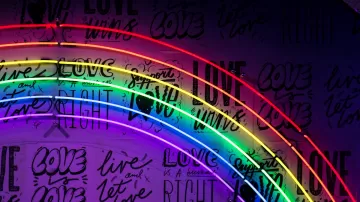


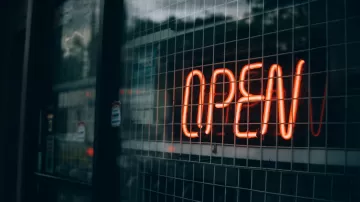

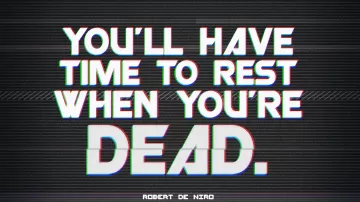

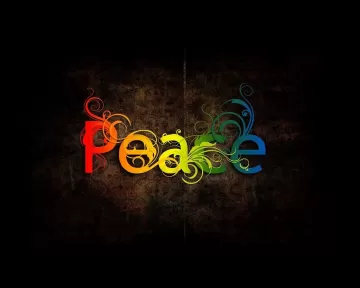
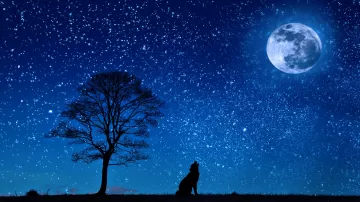
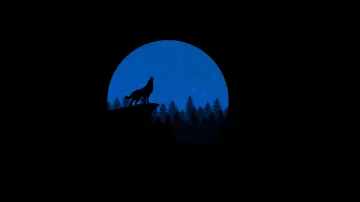
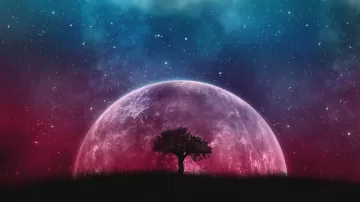
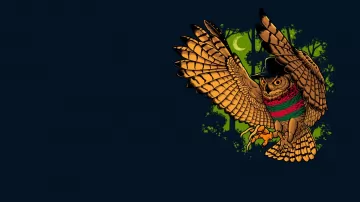
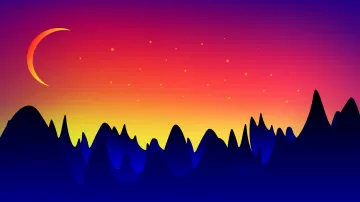
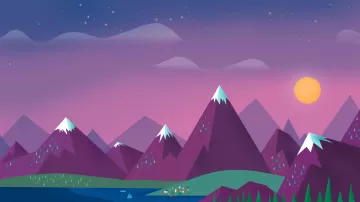
Download Free wallpaper, Hd Backgrounds for your Phone and PC
A wallpaper or background (also known as a desktop wallpaper, desktop background, desktop picture or desktop image on computers) is a digital image (photo, drawing etc.) used as a decorative background of a graphical user interface on the screen of a computer, smartphone or other electronic devices. On a computer, wallpapers are generally used on the desktop, while on a mobile phone they serve as the background for the home screen. Though most devices come with a default background image, modern devices usually allow users to manually change the background image.
The term "wallpaper" was used in Microsoft Windows before Windows Vista (where it is called the "desktop background"), while macOS refers to it as "desktop picture". On older systems which allowed small repeated patterns to be set as background images, the term desktop pattern was used.
Animated backgrounds (sometimes referred to as live backgrounds or dynamic backgrounds) refers to wallpapers which feature a moving image or a 2D / 3D scene as an operating system background rather than a static image, it may also refer to wallpapers being cycled in a playlist, often with certain transition effects. Some operating systems, such as the Android operating system, provide native support for animated wallpapers.
Wallpaper History : The X Window System was one of the earliest systems to include support for an arbitrary image as wallpaper via the xsetroot program, which at least as early as the X10R3 release in 1985 could tile the screen with any solid color or any binary-image X BitMap file. In 1989, a free software program called xgifroot was released that allowed an arbitrary color GIF image to be used as wallpaper, and in the same year the free xloadimage program was released which could display a variety of image formats (including color images in Sun Rasterfile format) as the desktop background. Subsequently, a number of programs were released that added wallpaper support for additional image formats and other features, such as the xpmroot program (released in 1993 as part of fvwm) and the xv software (released in 1994).
The original Macintosh operating system only allowed a selection of 8×8-pixel binary-image tiled patterns; the ability to use small color patterns was added in System 5 in 1987. MacOS 8 in 1997 was the first Macintosh version to include built-in support for using arbitrary images as desktop pictures, rather than small repeating patterns.
Windows 3.0 in 1990 was the first version of Microsoft Windows to come with support for wallpaper customization, and used the term "wallpaper" for this feature. Although Windows 3.0 only came with 7 small patterns (2 black-and-white and 5 16-color), the user could supply other images in the BMP file format with up to 8-bit color (although the system was theoretically capable of handling 24-bit color images, it did so by dithering them to an 8-bit palette). to provide similar wallpaper features otherwise lacking in those systems. A wallpaper feature was added in a beta release of OS/2 2.0 in 1991.
Due to the widespread use of personal computers, some wallpapers have become immensely recognizable and gained iconic cultural status. Bliss, the default wallpaper of Microsoft Windows XP has become the most viewed photograph of the 2000s.
On this website we provide 28 types of wallpaper.Types or category of wallpaper given bellow:
3D
Abstract
Animals
Anime
Art
Cars
City
Dark
Fantasy
Flowers
Food
Games
Holidays
Love
Macro
Minimalism
Motorcycles
Movies
Music
Nature
Other
Space
Sport
Technologies
Textures
TV Series
Vector
Words
3D: computer graphics that use a three-dimensional representation of geometric data. 3D computer graphics, or three-dimensional computer graphics, are graphics that use a three-dimensional representation of geometric data that is stored in the computer for the purposes of performing calculations and rendering 2D images.
Abstract: An abstract is a brief summary of a research article, thesis, review, conference proceeding, or any in-depth analysis of a particular subject and is often used to help the reader quickly ascertain the paper's purpose.
Animals: Animals are multicellular eukaryotic organisms that form the biological kingdom Animalia. With few exceptions, animals consume organic material, breathe oxygen, are able to move, reproduce sexually, and grow from a hollow sphere of cells, the blastula, during embryonic development.
Anime : anime is hand-drawn and computer animation originating from or associated with Japan. The word anime is the Japanese term for animation, which means all forms of animated media.
Art : Art is a diverse range of human activities in creating visual, auditory or performing artifacts (artworks), expressing the author's imaginative, conceptual ideas, or technical skill, intended to be appreciated for their beauty or emotional power.
Cars : A car (or automobile) is a wheeled motor vehicle used for transportation. Most definitions of cars say that they run primarily on roads, seat one to eight people, have four tires, and mainly transport people rather than goods.
City : A city is a large human settlement. It can be defined as a permanent and densely settled place with administratively defined boundaries whose members work primarily on non-agricultural tasks.
Dark : black backgrounds
Fantasy : Fantasy is a genre of speculative fiction set in a fictional universe, often inspired by real world myth and folklore. Its roots are in oral traditions, which then became literature and drama. From the twentieth century it has expanded further into various media, including film, television, graphic novels, manga and video games.
Flowers : A flower, sometimes known as a bloom or blossom, is the reproductive structure found in flowering plants (plants of the division Magnoliophyta, also called angiosperms). The biological function of a flower is to affect reproduction, usually by providing a mechanism for the union of sperm with eggs.
Food : Food is any substance consumed to provide nutritional support for an organism. Food is usually of plant or animal origin, and contains essential nutrients, such as carbohydrates, fats, proteins, vitamins, or minerals. The substance is ingested by an organism and assimilated by the organism's cells to provide energy, maintain life, or stimulate growth.
Games : A game is a structured form of play, usually undertaken for enjoyment and sometimes used as an educational tool. Games are distinct from work, which is usually carried out for remuneration, and from art, which is more often an expression of aesthetic or ideological elements.
Holidays : A holiday is a day set aside by custom or by law on which normal activities, especially business or work including school, are suspended or reduced. Generally, holidays are intended to allow individuals to celebrate or commemorate an event or tradition of cultural or religious significance.
Love : Love is a complex set of emotions, behaviors, and beliefs associated with strong feelings of affection, protectiveness, warmth, and respect for another person.
Macro : Macro photography, is extreme close-up photography, usually of very small subjects and living organisms like insects, in which the size of the subject in the photograph is greater than life size.
Minimalism : Minimalist photography is a form of photography that is distinguished by extreme, austere simplicity. It emphasizes spareness and focuses solely on the smallest number of objects in the composition process.
Motorcycles : Good motorcycle pictures are the epitome of cool, rugged, and edgy.
Movies : Film, also called movie or motion picture, is a visual art used to simulate experiences that communicate ideas, stories, perceptions, feelings, beauty or atmosphere by the means of recorded or programmed moving images along with other sensory stimulations.
Music : Music is an art form and cultural activity whose medium is sound organized in time.
Nature : Nature photography is a wide range of photography taken outdoors and devoted to displaying natural elements such as landscapes, wildlife, plants, and close-ups of natural scenes and textures. Nature photography tends to put a stronger emphasis on the aesthetic value of the photo than other photography genres, such as photojournalism and documentary photography.
Other :
Space : Astrophotography is photography of astronomical objects, celestial events, and areas of the night sky. The first photograph of an astronomical object (the Moon) was taken in 1840, but it was not until the late 19th century that advances in technology allowed for detailed stellar photography.
Sport : Sports photography refers to the genre of photography that covers all types of sports. In the majority of cases, professional sports photography is a branch of photojournalism, while amateur sports photography, such as photos of children playing association football, is a branch of vernacular photography.
Technologies : Technology of photography, equipment, techniques, and processes used in the production of photographs. The most widely used photographic process is the black-and-white negative–positive system
Textures : In the visual arts, texture is the perceived surface quality of a work of art. It is an element of two-dimensional and three-dimensional designs and is distinguished by its perceived visual and physical properties. Use of texture, along with other elements of design, can convey a variety of messages and emotions.
TV Series : A television show (often simply TV show) is any content produced for broadcast via over-the-air, satellite, cable, or internet and typically viewed on a television set, excluding breaking news, advertisements, or trailers that are typically placed between shows. Television shows are most often scheduled well ahead of time and appear on electronic guides or other TV listings.
Vector : Vector graphics are computer graphics images that are defined in terms of 2D points, which are connected by lines and curves to form polygons and other shapes. Each of these points has a definite position on the x- and y-axis of the work plane and determines the direction of the path; further, each path may have various properties including values for stroke color, shape, curve, thickness, and fill.
Words :